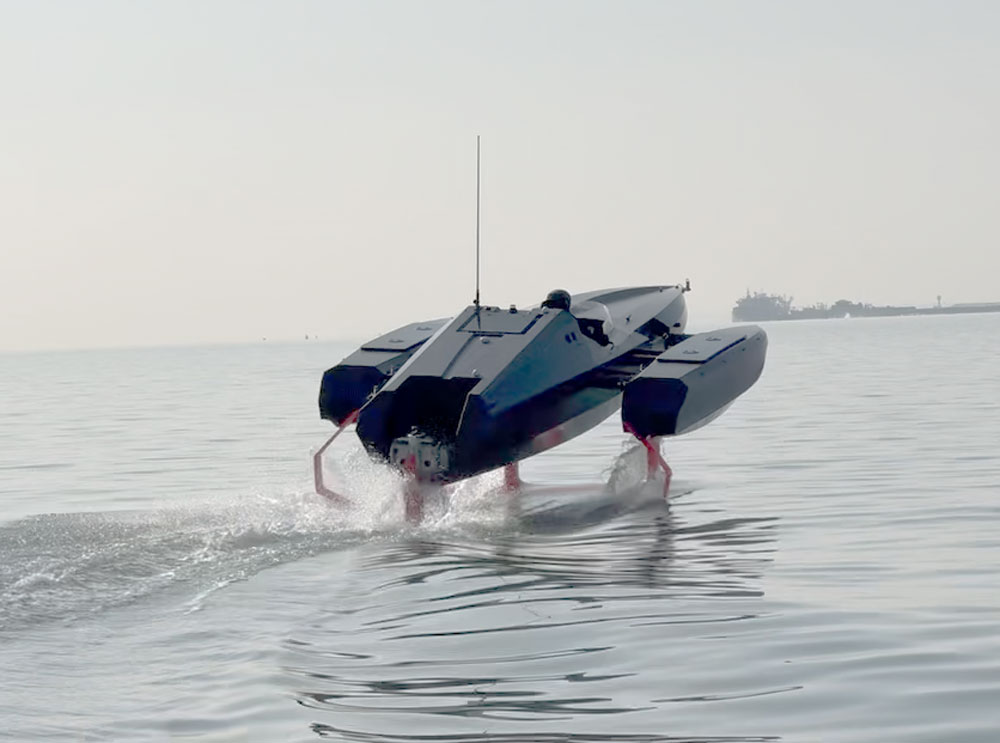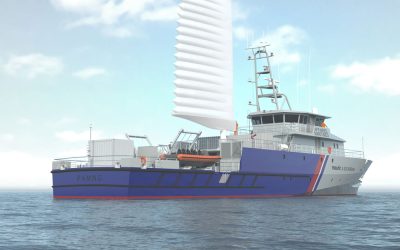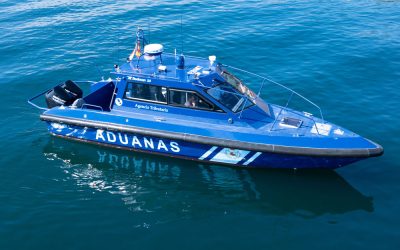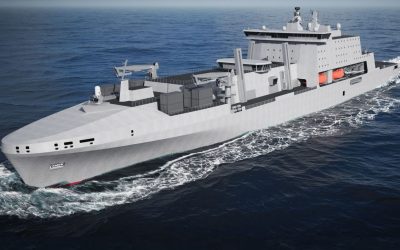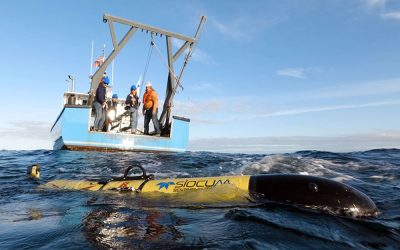The sleek, black trimaran set outside Seawork’s main gate this summer was riveting, and not just for its triple-hulled design: more unusual were the bright orange foils extending beneath. However, what’s important isn’t novelty and excitement: rather the reverse. The idea, underlines Chris O’Neill, technical director at Chartwell Marine, is to explore how foiling can be made more reliable, robust and, for ferry operations, a safer bet in all senses. Yet, there are still questions that need to be answered to determine the next steps for this collaboration between Chartwell, Newcastle Marine Services and Solent University.
The 9.4m-long Solent TriFoiler has been running sea trials for the last few months under the UK’s Clean Maritime Demonstration Competition (CMDC3). First of the proven ‘wins’ is that the TriFoiler is five times cheaper to run than an equivalent fossil fuel-powered monohull. Likewise, it could have several times the endurance of a similar, fully electric displacement vessel.
But how does it compare with other foiling designs? This prototype also demonstrates that, compared to a monohull or catamaran, a trimaran form lowers the power required to get up to foiling speed. “Normally, you’ve got your highest resistance just before take off because you’ve still got the hulls in the water,” explains Solent University’s senior design and engineering lecturer Giles Barkley. The TriFoiler does things differently. By lifting the two, shorter sponsons slightly before the main hull, it lowers ‘peak’ resistance and effectively spreads take-off loads. As a result, this approach can reduce installed power and therefore weight.
Further, Barkley explains, once you’re foiling, drag drops significantly anyway: “Take off might be at 10-12 knots – but you can go straight to about 18-19knots for roughly the same power.” Barkley adds that, when foiling, “it’s running on about the equivalent of three electric home showers: roughly 27kW”.
The TriFoiler’s total beam is 3.7m and the sponsons have a beam of around 0.4m each, while the main hull measures 1.1m at the waterline. As Barkley explains: “You want the displacement in narrow hulls for take-off and landing.” Likewise, the wetted surface has a high length-to-width ratio to minimise resistance.
While the prototype holds enough room for the driver, power and controls, a larger ferry version should be capable of carrying 35 or 40 passengers. Therefore, this prototype could eventually provide the basis for a 24m foiling ferry with a couple of hundred kilowatts of batteries onboard, capable of speeds of 26-28 knots in categorised waters – up to around 1.5m Hs. “The eventual design is aimed at being able to take on off-peak runs between Southampton and Cowes,” explains O’Neill, “but using a lot less energy than current fast ferries, which burn huge amounts of fuel even when empty. This boat has roughly 50kWh of batteries, but that takes it surprisingly far. If you scale up to a full-size ferry, it could probably do around two return journeys before you’d need a recharge.”
Top of the list of notable differences between this and other foiling designs is simplicity. There is a reason that foiling is often called ‘flying’: the physics are very similar to that of aircraft and so far, they equally rely on sophisticated articulation – even down to ‘ailerons’ on the foils’ trailing edge. But the forces are several hundred times greater since water is thicker: plus, it can come with unexpected lumps in the way of debris or biofouling.
In short, there’s potential for failure. O’Neill asks: “Do we believe that it’s realistic to demand operators carry out a complete set of preflight checks on all the foiling systems – as you would on an aircraft – before going up onto a foil at high speeds with a lot of passengers onboard?” Therefore, this alternative aims to keep it simple. The central twin-legged foil has two pod propellers of 20kW each, set at the crosspieces, but it’s a fixed design with no ailerons or other flaps to control lift.
For the full, in-depth article, don’t miss the August 2025 issue of The Naval Architect
